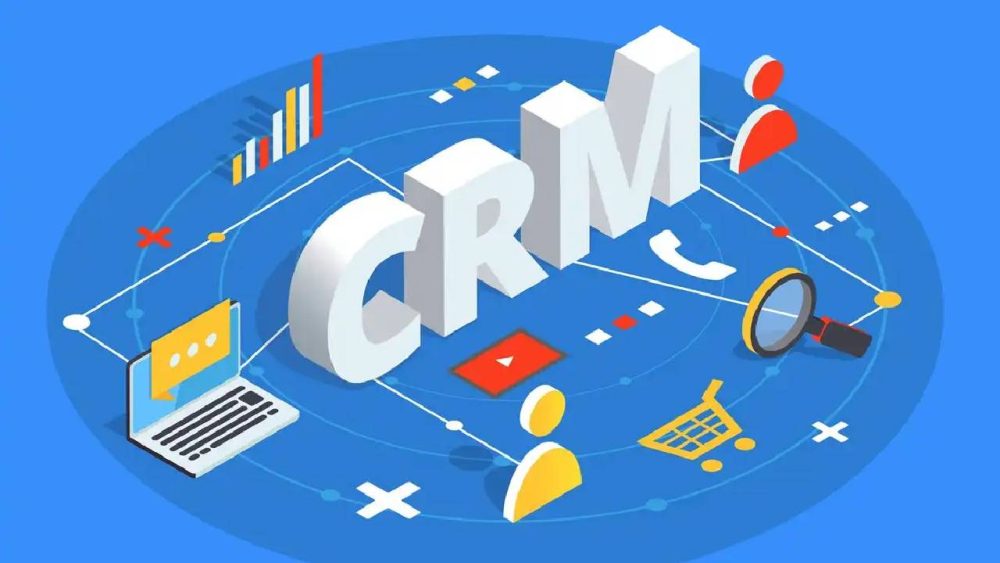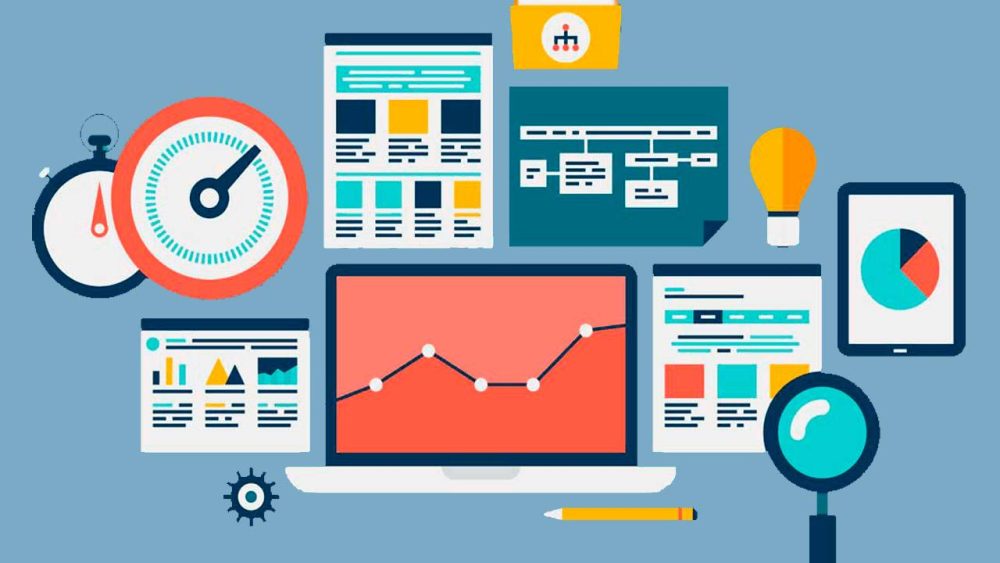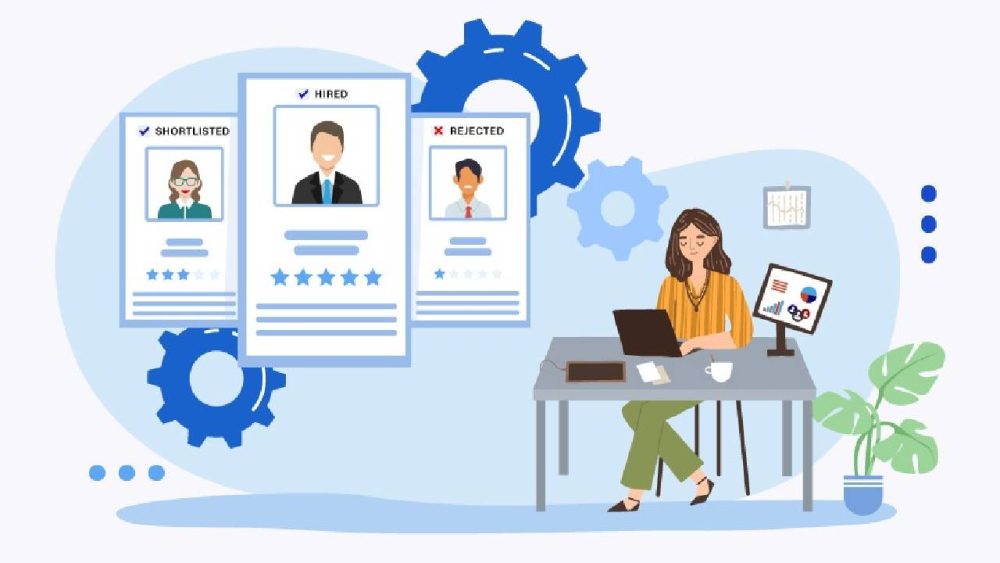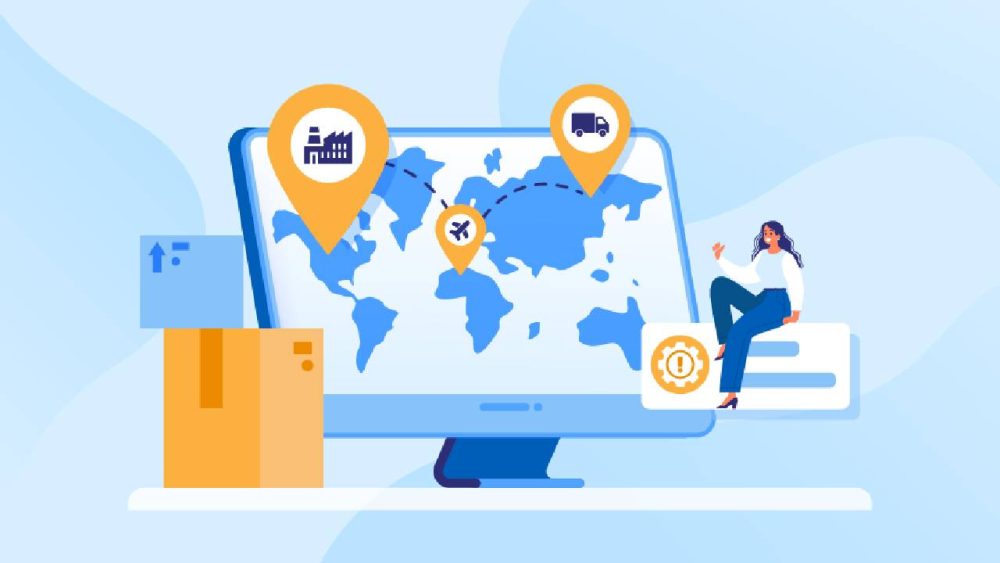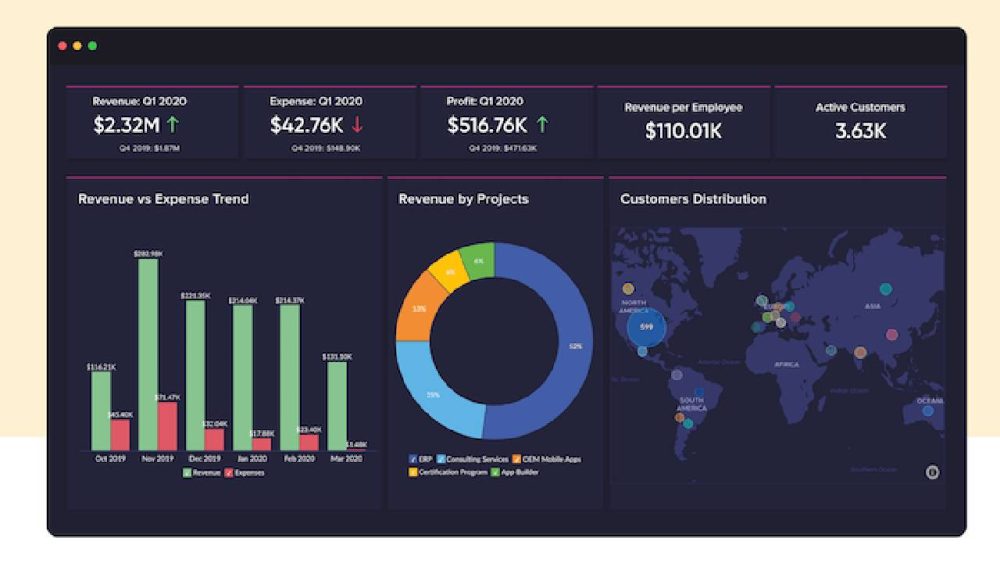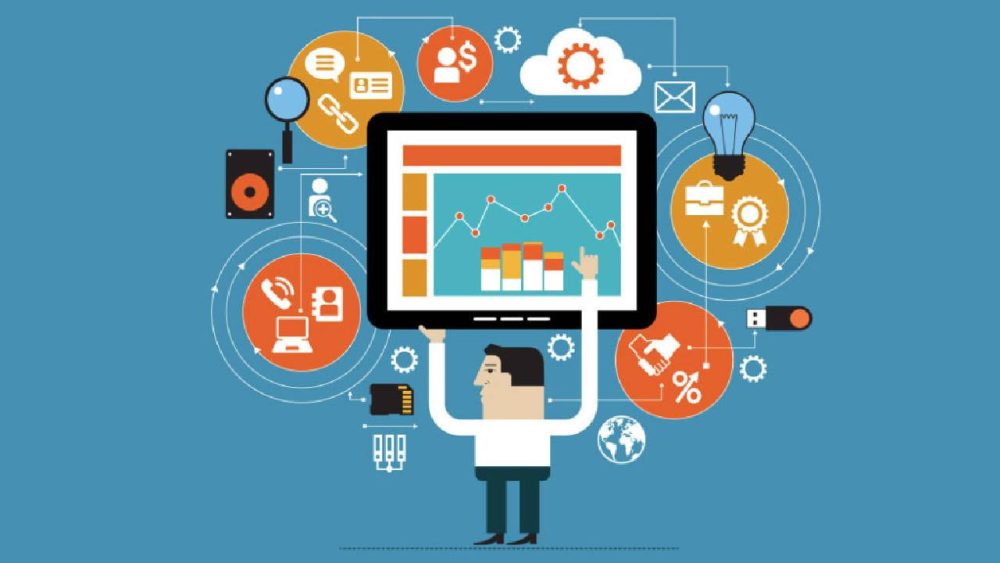Top Business Software Solutions for Efficiency
Empower Your Business with Cutting-Edge Software Solutions for Optimal Efficiency
In this blog post, we will explore how you can make your business operations run smoother and more efficiently with the help of cutting-edge business software solutions.
These remarkable tools are designed to simplify various aspects of your business, from managing finances and customer relationships to optimizing workflows and enhancing productivity. Leverage business software solutions for streamlined processes, time savings, resource optimization, and greater success in your endeavors.
Let’s dive in and discover the power of these transformative technologies that can propel your business forward.
Accounting and Financial Management Software
Managing finances is a crucial aspect of any business, and business software solutions play a vital role in simplifying and streamlining this process. Let’s explore some key functionalities of accounting and financial management software that can make your financial tasks a breeze.
Automating Bookkeeping and Financial Reporting
One of the primary benefits of using accounting and financial management software is the automation of bookkeeping tasks. With just a few clicks, you can record your financial transactions, such as income and expenses. The software automatically organizes this data, eliminating the need for manual data entry, which can be time-consuming and error-prone. This streamlines your financial record-keeping process, ensuring that you have accurate and up-to-date financial information at your fingertips.
Business Software Solutions simplify financial reporting, effortlessly generating balance sheets, income statements, and cash flow reports for valuable insights. Identify opportunities for cost-cutting, revenue improvement, and financial optimization with ease.
See Also: How to Optimize Your Online Shop With Data Mining
Invoice and Expense Management Tools
As your business grows, keeping track of invoices and expenses can be challenging. However, Business Software Solutions streamline invoicing and expenses, ensuring efficient and precise financial management.
Through the software, you can create professional-looking invoices customized with your company’s logo and details. Send electronic invoices to clients and automate payment reminders for prompt receipt of payments with ease.
On the expense side, you can conveniently record and categorize expenses, such as office supplies, utilities, and employee reimbursements. The software may also integrate with your bank accounts, allowing you to reconcile expenses effortlessly.
Budgeting and Forecasting Solutions
Effective budgeting and forecasting are essential for the financial planning and success of your business. Accounting and financial management software offers robust tools for creating budgets and making financial projections.
With Business Software Solutions, you can establish budgets for different departments or projects and monitor actual expenses versus budgeted amounts. This enables timely adjustments to avoid overspending or underspending.
Moreover, the software can assist you in making informed financial forecasts based on historical data and current trends. These forecasts can aid in making critical business decisions, such as resource allocation, investment opportunities, and growth strategies.
Read Also: 5 Ways to Choose the Right Business Software
Customer Relationship Management (CRM) Software
Customer Relationship Management (CRM) software is a powerful tool that can revolutionize the way businesses interact with their customers. Let’s delve into the various functionalities of CRM software that contribute to enhancing customer relationships and streamlining sales and lead management.
Enhancing Customer Interactions and Communication
Business Software Solutions, such as CRM software, centralize customer information for easy access among team members. This fosters seamless communication and ensures a unified approach when interacting with customers.
With CRM software, customer interactions become more personalized and effective. By storing details like past purchases, preferences, and communication history, businesses can better understand their customers’ needs and preferences. This allows for targeted and tailored communication, leading to improved customer satisfaction and loyalty.
Business Software Solutions further automates communication processes, sending personalized emails, responding to inquiries, and following up on leads. This streamlines workflows and ensures customers receive timely and relevant responses, enhancing their overall experience.
Streamlining Sales and Lead Management
CRM software serves as a central hub for managing sales and leads. Simplify lead tracking, capturing and organizing leads from multiple sources like website forms, social media, and marketing campaigns.
With CRM software, sales teams can easily track the progress of leads through the sales pipeline. This ensures that no potential opportunity falls through the cracks, and every lead receives the attention it deserves.
Business Software Solutions utilize automation to handle lead assignments, follow-up reminders, and nurturing sequences, empowering sales teams to prioritize relationship building and deal closures efficiently.
Personalization and Customer Segmentation Features
One of the standout features of CRM software is its ability to facilitate personalized customer experiences. The software analyzes customer data to identify patterns and preferences, empowering targeted marketing campaigns and personalized offers for success.
Business Software Solutions, particularly CRM software, facilitate customer segmentation, grouping customers based on demographics, purchase history, or engagement levels. These segmented lists enable targeted marketing efforts, leading to higher conversion rates and increased customer satisfaction.
Additionally, CRM software empowers businesses to stay connected with their customers through various channels, including email, social media, and phone. This multi-channel approach ensures that businesses are accessible to their customers, enhancing engagement and strengthening relationships.
Project Management Software
Business Software Solutions for project management are valuable tools that significantly enhance project efficiency and team collaboration. Let’s explore the key functionalities that streamline project execution within businesses.
Agile and Kanban Tools for Efficient Project Execution
Business Software Solutions for project management often integrate Agile and Kanban methodologies, proven frameworks for efficient project management. Agile methodologies break complex projects into manageable sprints, promoting adaptability and adjustments based on feedback and changing requirements.
Kanban, on the other hand, employs visual boards with columns to represent different stages of work. Team members can move tasks from one column to another as they progress, providing a clear and transparent view of the project’s status. These tools facilitate better task prioritization, workload distribution, and real-time progress tracking, leading to more efficient project execution.
Task and Time Management Features
Project management software offers robust task and time management features that empower teams to stay organized and meet deadlines. Team members can create and assign tasks to specific individuals, set due dates, and establish task dependencies, ensuring that the project progresses smoothly and on schedule.
Additionally, the software enables time tracking, allowing team members to record the time spent on each task. This data not only helps monitor individual and team productivity but also aids in accurate project estimation and resource allocation for future projects.
The software’s automated reminders and notifications ensure that team members are aware of upcoming deadlines and tasks, preventing any lapses or delays in project execution.
Read Also: Key Factors That Lead to IT Project Failures
Collaboration and Team Communication Capabilities
Effective collaboration and communication are integral to the success of any project, and project management software excels in this aspect. The software provides centralized communication channels, enabling team members to share updates, feedback, and files seamlessly.
Business Software Solutions offer collaboration features like file sharing, document versioning, and comment threads, facilitating efficient teamwork on project deliverables. This leads to organized and productive collaboration, eliminating the need for scattered documents and long email chains.
Furthermore, project management software often integrates with various communication tools, such as instant messaging platforms and video conferencing software, enabling real-time communication and facilitating quick decision-making.
Human Resources Management Software
Human Resources Management Software, also known as HRMS or HR software, is a valuable business software solution that revolutionizes the way businesses handle various aspects of their human resources functions. Let’s explore the key functionalities of HR software that contribute to streamlining recruitment, employee onboarding, training, performance evaluation, and feedback processes.
Streamlining Recruitment and Applicant Tracking
HR software streamlines the recruitment process by automating and centralizing the entire hiring workflow. It starts with creating and posting job openings on multiple platforms, including job boards and the company’s career website. The software then collects and organizes incoming applications, making it easier for HR teams to review and shortlist candidates.
Applicant tracking features enable businesses to manage candidate profiles, schedule interviews, and communicate with applicants effectively. This not only speeds up the hiring process but also ensures a more organized and efficient candidate evaluation.
Additionally, HR software may integrate with pre-employment assessment tools, enabling businesses to assess candidates’ skills and suitability for the role before proceeding to the interview stage. This helps in making more informed hiring decisions and ensures that the best-fit candidates are selected.
Employee Onboarding and Training Solutions
Efficient employee onboarding is crucial for setting new hires up for success. HR software facilitates a smooth onboarding process by automating the paperwork, such as contracts and compliance forms. This ensures that new employees have access to all necessary documents from day one, reducing administrative burdens.
Moreover, the software can create personalized onboarding checklists for each new employee, outlining the tasks they need to complete and providing them with essential information about the company and their role.
HR software also supports training and development initiatives by providing tools for creating and managing training programs. This allows businesses to track employees’ progress and performance throughout their training journey. As a result, businesses can identify areas for improvement and ensure that employees receive the necessary support to excel in their roles.
Performance Evaluation and Feedback Software
Effective performance evaluation is key to employee growth and overall business success. HR software simplifies the performance evaluation process by providing a platform for managers and employees to set goals, track progress, and conduct regular performance reviews.
360-degree feedback features enable employees to receive feedback from multiple sources, such as peers, managers, and subordinates. This comprehensive feedback helps employees gain a holistic understanding of their performance and areas for development.
The software also supports continuous feedback mechanisms, allowing employees and managers to exchange feedback and address any performance concerns in a timely manner. This fosters a culture of open communication and continuous improvement within the organization.
Inventory and Supply Chain Management Software
Inventory and Supply Chain Management Software is a powerful business software solution that can transform the way businesses manage their inventory and streamline the entire supply chain. Let’s explore the key functionalities of this software that contribute to efficient inventory tracking, supplier management, procurement automation, and demand forecasting.
Inventory Tracking and Optimization
Business Software Solutions, specifically Inventory and Supply Chain Management Software, play a critical role in managing stock levels efficiently. They offer real-time visibility into inventory levels, allowing businesses to track product quantity and location accurately.
With this software, businesses can automate inventory tracking, receiving alerts when stock levels fall below predefined thresholds. This feature ensures that businesses can restock in a timely manner, preventing stockouts and keeping customers satisfied.
Moreover, the software offers inventory optimization tools that analyze historical sales data and customer demand patterns. Using this data, businesses can optimize their inventory levels to strike the right balance between having enough stock to meet demand and minimizing excess inventory holding costs.
Supplier Management and Procurement Automation
Supplier management is crucial for maintaining strong and reliable supplier relationships. Inventory and Supply Chain Management Software centralizes supplier data, making it easier for businesses to manage supplier information, contracts, and performance metrics in one place.
The software enables businesses to automate procurement processes, such as creating purchase orders and sending them to suppliers electronically. This automation streamlines the procurement workflow, reducing manual errors and processing time.
Additionally, the software can facilitate supplier performance evaluation, helping businesses identify top-performing suppliers and fostering collaboration with the most reliable partners.
Demand Forecasting and Inventory Replenishment
Accurate demand forecasting is essential for businesses to plan their inventory replenishment effectively. Inventory and Supply Chain Management Software employs advanced forecasting algorithms that analyze historical sales data, seasonal trends, and market insights to predict future demand accurately.
Business Software Solutions enable efficient inventory replenishment strategies through demand forecasting. The software automatically generates purchase or production orders based on demand projections, ensuring businesses have the right inventory to fulfill customer orders.
Furthermore, the software can integrate with suppliers’ systems, enabling automatic inventory replenishment when stock levels reach a specific threshold. This integration optimizes the supply chain, reducing lead times and ensuring seamless inventory management.
Communication and Collaboration Software
Communication and Collaboration Software is a crucial business software solution that enhances how teams interact, share information, and work together seamlessly. Let’s explore the key functionalities of this software that facilitate efficient communication and collaboration within businesses.
Unified Communication Platforms
Unified Communication Platforms bring together various communication channels into a single, cohesive interface. These platforms typically include features such as instant messaging, voice and video calling, and email integration.
With unified communication, team members can communicate in real time regardless of their physical location. This fosters quick decision-making, efficient problem-solving, and streamlined project execution.
Additionally, these platforms often offer presence indicators, which show team members’ availability. This feature helps team members know when their colleagues are online and accessible for communication.
Virtual Meeting and Webinar Solutions
Virtual meeting and webinar solutions enable businesses to conduct face-to-face meetings and presentations remotely. These platforms typically offer features such as video conferencing, screen sharing, and interactive chat.
Virtual meetings empower teams to collaborate effectively, regardless of their geographic locations. This eliminates the need for in-person meetings, saving time and resources while ensuring all team members can actively participate.
Webinar solutions are especially useful for hosting large-scale presentations, training sessions, or events. They allow businesses to connect with a broader audience, fostering engagement and knowledge sharing.
File Sharing and Document Collaboration Tools
File sharing and document collaboration tools simplify how teams collaborate on files and documents. These tools provide a centralized repository where team members can upload, edit, and share files.
Collaboration features, such as version control and real-time editing, ensure that team members can work together on documents simultaneously. This prevents version conflicts and ensures that everyone has access to the most up-to-date information.
Furthermore, these tools offer access controls, allowing businesses to control who can view, edit, or share specific files. This ensures data security and privacy, especially when dealing with sensitive information.
Data Analytics and Business Intelligence Software
Data Analytics and Business Intelligence Software is a powerful business software solution that empowers businesses to extract valuable insights from their data and make informed decisions. Let’s explore the key functionalities of this software that facilitate data analysis, visualization, and predictive analytics.
Extracting Insights from Business Data
Data Analytics and Business Intelligence Software enable businesses to collect, process, and analyze vast amounts of data from various sources. This data can include sales figures, customer information, website traffic, and more.
The software employs advanced algorithms and data mining techniques to identify patterns, trends, and correlations within the data. These insights provide businesses with a deeper understanding of their operations, customers, and market trends.
Data analytics can uncover valuable information, such as customer preferences, which products perform best, and areas for operational improvement. Armed with these insights, businesses can make data-driven decisions to optimize their strategies and boost overall performance.
Visualizations and Dashboards for Decision-Making
Data visualization is a key aspect of Data Analytics and Business Intelligence Software. It presents complex data in the form of interactive charts, graphs, and dashboards, making it easy for users to comprehend and interpret the information.
Visualizations enhance decision-making processes by providing a clear and concise representation of data trends. For example, businesses can quickly identify sales growth patterns, compare performance across different time periods, or assess the effectiveness of marketing campaigns.
Dashboards consolidate multiple visualizations into a single view, allowing users to monitor key performance indicators (KPIs) in real-time. This real-time monitoring ensures that businesses can react promptly to any deviations from expected outcomes.
Predictive Analytics and Machine Learning Integration
Data Analytics and Business Intelligence Software often integrate predictive analytics and machine learning capabilities. Predictive analytics uses historical data to make predictions about future trends and outcomes.
Machine learning algorithms can identify complex patterns and correlations within data that may be difficult for humans to recognize. As a result, businesses can benefit from more accurate forecasts and insights into customer behavior.
With predictive analytics and machine learning integration, businesses can anticipate customer needs, optimize inventory levels, and improve resource allocation. This proactive approach allows businesses to stay ahead of the competition and seize opportunities for growth.
Marketing Automation Software
Marketing Automation Software is a powerful business software solution that revolutionizes the way businesses execute marketing strategies and engage with their audience. Let’s explore the key functionalities of this software that facilitate email marketing automation, social media management, lead nurturing, and conversion optimization.
Email Marketing Automation and Campaign Management
Email marketing is a vital component of any marketing strategy, and Marketing Automation Software takes it to the next level with automation capabilities. Businesses can create personalized and targeted email campaigns, tailoring content to specific segments of their audience.
The software automates email sending based on predefined triggers, such as user actions or specific dates. This ensures that businesses can deliver timely and relevant messages to their subscribers without manual intervention.
Moreover, Marketing Automation Software enables businesses to track the performance of their email campaigns, such as open rates, click-through rates, and conversions. This data helps businesses refine their email marketing strategies and optimize their campaigns for better results.
Social Media Management and Scheduling Tools
Social media is a powerful platform for businesses to connect with their audience and build brand awareness. Marketing Automation Software simplifies social media management by offering tools for content scheduling, publishing, and monitoring.
Businesses can plan and schedule social media posts in advance, ensuring a consistent and steady presence on social platforms. The software allows for the simultaneous management of multiple social media accounts, streamlining the process for businesses with a significant online presence.
Additionally, Marketing Automation Software provides social media monitoring features, enabling businesses to track mentions, comments, and engagement on their social media posts. This helps businesses stay responsive to their audience and maintain a positive brand image.
Lead Nurturing and Conversion Optimization
Lead nurturing is a crucial process for converting potential customers into paying customers. Marketing Automation Software facilitates lead nurturing by automating personalized communication with leads at various stages of the sales funnel.
The software can track lead interactions with a business’s website, content, and emails, scoring leads based on their engagement levels. This lead scoring helps businesses identify the most qualified leads, enabling sales teams to focus their efforts on the leads most likely to convert.
Furthermore, Marketing Automation Software can automate the delivery of targeted content to leads based on their interests and behaviors. This personalized approach nurtures leads through the buying journey, increasing the chances of conversion.
Cybersecurity and Data Protection Software
Cybersecurity and Data Protection Software are essential business software solutions that safeguard sensitive information, fortify network security, and ensure data backup and disaster recovery. Let’s explore the key functionalities of this software that contribute to protecting businesses from cyber threats and potential data loss.
Protecting Sensitive Business Information
Protecting sensitive business information is of utmost importance to prevent data breaches and maintain the trust of customers and partners. Cybersecurity and Data Protection Software employ various encryption techniques to secure data at rest and in transit.
The software enables businesses to control access to sensitive data through user authentication and authorization mechanisms. This ensures that only authorized personnel can access and manipulate critical business information.
Furthermore, cybersecurity software often includes advanced threat detection and prevention capabilities. It can identify and block malicious activities, such as malware attacks, phishing attempts, and unauthorized access attempts before they cause harm.
Network Security and Firewall Solutions
Network security is a critical aspect of cybersecurity, and Data Protection Software provides robust network security and firewall solutions. Firewalls act as a protective barrier, monitoring and controlling incoming and outgoing network traffic.
The software can set up firewalls to filter traffic based on predefined rules, ensuring that only legitimate and safe connections are allowed. This prevents unauthorized access to the network and shields business systems from external threats.
In addition to firewalls, cybersecurity software may include intrusion detection and prevention systems (IDPS). IDPS monitors network activity for signs of potential threats and can automatically respond by blocking suspicious activities or sending alerts to IT personnel.
Data Backup and Disaster Recovery Plans
Data backup and disaster recovery are essential to protect businesses from data loss in case of unforeseen events, such as hardware failure, natural disasters, or cyber-attacks. Cybersecurity and Data Protection Software facilitate automated data backup and recovery processes.
The software can schedule regular backups of critical business data, storing copies in secure locations or the cloud. In case of data loss, businesses can restore their data quickly and minimize downtime, ensuring business continuity.
Moreover, cybersecurity software supports disaster recovery plans, outlining the necessary steps to recover data and resume operations after a disruptive event. These plans help businesses respond effectively to emergencies, minimizing the impact on business operations.
Integrations and Workflow Automation
Integrations and Workflow Automation are powerful business software solutions that streamline processes, connect different tools, and optimize overall business efficiency. Let’s explore the key functionalities of this software that contribute to creating seamless workflows, the benefits of software integration, and the use of Robotic Process Automation (RPA).
Creating Seamless Business Workflows
Workflow automation simplifies and accelerates business processes by automating repetitive tasks and orchestrating the flow of information across various systems. Businesses can create custom workflows that align with their unique processes, allowing for more efficient task management and collaboration.
With workflow automation, businesses can define specific triggers and actions, enabling the software to automatically initiate tasks based on predefined conditions. This automation eliminates the need for manual intervention, reducing the risk of errors and freeing up time for employees to focus on more strategic tasks.
Moreover, the software can facilitate task assignment and approval processes, ensuring that each task moves smoothly through the workflow and reaches the appropriate team members for action.
The Benefits of Software Integration
Software integration allows different applications and systems to communicate and share data seamlessly. Integrating various business software solutions enhances data flow and reduces data silos, leading to a more connected and cohesive work environment.
For instance, integrating customer relationship management (CRM) software with email marketing tools enables businesses to synchronize customer data and streamline communication with customers.
Integration between sales and inventory management software ensures that sales orders automatically update inventory levels, preventing overselling or stockouts.
The benefits of software integration also include improved data accuracy, reduced manual data entry, enhanced productivity, and increased overall business agility.
Leveraging Robotic Process Automation (RPA)
Robotic Process Automation (RPA) takes workflow automation to the next level by employing software robots to perform repetitive, rule-based tasks that would otherwise require human intervention. These robots can mimic human actions, such as data entry, form filling, and data extraction.
RPA proves highly valuable for tasks requiring interactions across various systems or applications, thanks to its ability to seamlessly navigate diverse interfaces. By harnessing RPA, businesses can realize substantial time and cost savings, given that robots execute tasks at a considerably faster pace than humans, ensuring high precision and efficiency in human-robot interaction.
Choosing the Right Software for Your Business
Selecting the appropriate business software solutions is a critical decision that can significantly impact your company’s efficiency and success. To ensure you make the right choice, consider the following factors when choosing the right software for your business.
Identifying Your Business Needs and Goals
Before exploring available software options, take the time to identify your specific business needs and goals. Assess the areas where your business could benefit from automation or optimization. For example, you may require accounting software to manage finances, CRM software to improve customer relationships, or project management software to streamline workflows.
Consider the features and functionalities that align with your business needs. Make a list of essential features, nice-to-have features, and any specific industry requirements.
Additionally, involve key stakeholders and team members in the decision-making process to gain valuable insights into the challenges they face and the software features that would be most beneficial for their daily tasks.
Considering Scalability and Future Growth
As your business evolves and grows, so will your software needs. It is crucial to choose software solutions that are scalable and can accommodate your business’s future expansion.
Consider how the software can adapt to an increased volume of data, users, or transactions. Ensure that the software can handle additional workloads without compromising performance.
Scalability is particularly important for cloud-based software, as it allows you to easily scale up or down based on your business demands.
Also, verify if the software provider offers upgrade options and additional features to cater to your business’s evolving requirements.
Evaluating Costs and Return on Investment
When choosing business software solutions, evaluating costs and return on investment (ROI) is essential. Keep in mind that the cheapest option may not always be the most cost-effective in the long run.
Consider the total cost of ownership, which includes not only the initial purchase cost but also ongoing maintenance, training, and support expenses.
Calculate the potential ROI by estimating how the software will improve efficiency, productivity, and revenue generation in your business. Factor in time savings reduced manual work, and the potential for increased sales or customer retention.
Additionally, consider the intangible benefits, such as improved customer satisfaction and better decision-making capabilities.
Compare different software solutions, and read reviews and testimonials from other businesses to gain insights into the software’s effectiveness and user satisfaction.
Implementing Business Software Successfully
Implementing business software solutions successfully is a crucial step towards maximizing the benefits of the software and achieving your business objectives. To ensure a smooth and effective implementation process, consider the following strategies and best practices.
Getting Buy-In from Stakeholders
Before beginning the implementation process, it is essential to gain buy-in from key stakeholders within the organization. These stakeholders may include top-level management, department heads, and employees who will be directly impacted by the software.
Present a clear and compelling case for why the software is necessary and how it aligns with the organization’s goals and objectives. Highlight the benefits and potential improvements that the software will bring to their respective areas.
Business Software Solutions implementation should address concerns and be open to stakeholder feedback. Involving stakeholders in decision-making fosters project ownership and positive attitudes toward the software.
Training and Support for Employees
Successful software implementation requires proper training and support. Provide comprehensive training to employees, ensuring a thorough understanding of Business Software Solutions features and functionalities.
Offer different training formats, such as in-person sessions, video tutorials, and online resources, to accommodate various learning styles and preferences.
During and after training, encourage employees to ask questions and seek assistance. Establish a support system, like a help desk or dedicated team, to address any issues or concerns related to Business Software Solutions implementation.
Continuously communicate with employees about the progress of the implementation, and provide ongoing support and guidance to ensure a smooth transition to using the software in their daily workflows.
Measuring and Monitoring the Impact of Software Implementation
To gauge the success of the software implementation, it is crucial to measure and monitor its impact on your business operations and objectives.
Establish key performance indicators (KPIs) that align with your business goals. These KPIs may include metrics related to productivity, efficiency, customer satisfaction, revenue growth, and cost savings.
Regularly track and analyze the data to assess the software’s effectiveness in achieving the desired outcomes. Compare the data before and after the implementation to understand the software’s impact accurately.
Seek feedback from employees and stakeholders to gain insights into their experience with the software. Use their feedback to identify areas for improvement and address any challenges or issues that may arise.
Based on the data and feedback collected, make necessary adjustments and optimizations to ensure that the software continues to support your business goals effectively.
Conclusion
In conclusion, embracing the right business software solutions can be a game-changer for streamlining your operations and driving efficiency within your organization. From automating repetitive tasks to enhancing communication and collaboration, these software solutions empower businesses to optimize their processes and make data-driven decisions.
Remember to identify your specific business needs, consider scalability for future growth, and evaluate the costs and returns before choosing the right software. Once implemented, continuously measure and monitor the impact to ensure ongoing success.
We hope you found this information helpful! Don’t forget to share your thoughts and feedback in the comments below and share this valuable information with your friends. Together, let’s take our businesses to new heights of productivity and success!



